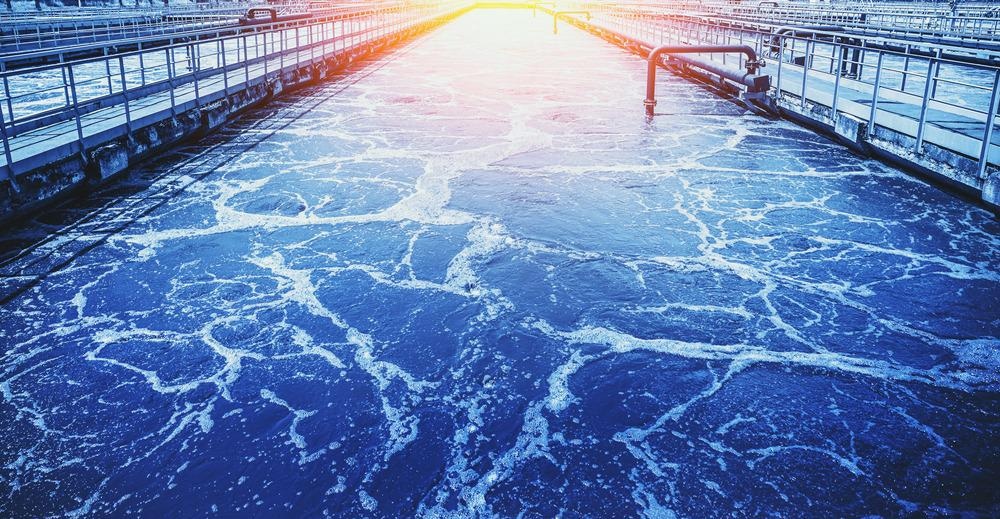A novel finding to remove phosphate from wastewater was considered in the journal Science of The Total Environment. Phosphorus adsorption is improved across a wide temperature range and displays remarkable reusability and selectivity for phosphate in the presence of multiple anions and humic substances, as well as phosphate scavenging efficacy in contaminated water sources and swine wastewater.

Study: Phosphate removal from actual wastewater via La(OH)3-C3N4 adsorption: Performance, mechanisms and applicability. Image Credit: DedMityay/Shutterstock.com
Surface precipitation, electrical attraction, and inner-sphere complex formation via ligand exchange were identified as adsorption processes.
Furthermore, La(OH)3-C3N4 showed excellent phosphate scavenging effectiveness in both diluted and concentrated effluent (natural pond and swine wastewater respectively). The results show that La(OH)3-C3N4 is a suitable composite material for managing phosphate in aquatic settings.
The Danger of Phosphate in Waste Water
Water body eutrophication is a worldwide issue that endangers both marine habitats and public health. Phosphorus is a major contributor to algal blooms. Excess phosphorus discharge and ecology deterioration are thought to be caused by widely used fertilizer applications, detergents, protective coatings, and other 'everyday' products, primarily agro-based and economic processes.
Phosphorus discharge in surface water bodies must be governed and minimized. To delete phosphorus from the used water, various techniques such as treatment processes, chemical coagulation, and adsorbent have been evolved (also known as wastewater). Adsorption is a viable technique owing to its benefits over the other mentioned methods (i.e. simple operation, low cost, and high efficiency).
La(OH)3 Nano Materials as the Answer
As a result, it is essential to develop appropriate adsorbent materials with high adsorption capacity as well as selectivity. Various adsorbents, including metal oxides, carbon-based materials, waste biofuels, resins, and zeolite, have earlier been analyzed for their efficiency in removing phosphorus from wastewater.
La(OH)3 is a good nanomaterial to exclude phosphate. However, the La(OH)3 nanomaterials are prone to aggregation in water, lowering its surface/volume proportion and, as a result, the number of functional reaction sites; as a result, its nutrient removal efficiency is reduced when used in aquatic ecosystems.
Immobilization of La(OH)3 nanomaterials on natural or artificial carriers has indeed been developed to improve dispersibility and accessibility of binding sites to phosphate while in water.
Carbon Nitride Materials
Because of their physical and chemical properties, novel two-dimensional (2D) graphite phase carbon nitride materials (g-C3N4) have recently obtained interdisciplinary attention (biocompatibility, chemical stability, super mechanical performance, and high specific surface area).
Further Reading - Nuclear Waste Treatment: An Overview
The highly crystalline s-triazine (C3N3) and tri-s-triazine (C6N7) rings of the g-C3N4 nanosheet, which has a high abundance of binding sites and functional groups, not only acts as a stabilizing agent for La(OH)3 nanoparticles but also as an adequate adsorbent for the removal of pollutants.
Moreover, studies have shown that the creation of oxygen vacancies in La-C3N4 composites can boost electron transfer rates and lower the bonding electrostatic repulsion for phosphate adsorbent, thereby increasing phosphate adsorption capability. Thus, combining g-C3N4 and La(OH)3 may have synergistic properties that can enhance phosphate adsorption capability in water.
Research of Phosphate Removal Using Nanoparticles
In this study, novel La(OH)3-C3N4 nanoparticles have been synthesized using a two-step thermal procedure and used as an effective adsorbent for removal and potential recovery (adsorbent) of phosphate from wastewater. The adsorption mechanism was evaluated using synthesized and actual wastewater in batch or continuous fixed-bed trials.
The isotherm models, kinetics, effect of dose and pH on P percentage removal, as well as interaction effects of coexisting anions and humic acids, were researched and presented in this study. The adsorbent performance was assessed using the Thomas and Yan models and flow characteristics from various flow rates.
The underlying mechanisms were thoroughly examined using different characterization methods (XPS, Zeta potential, FTIR, and SEM etc.). The use of La(OH)3-C3N4 for the treatment of contaminated, diluted, and focused actual wastewater ('used' pond water and actual farming wastewater) was also investigated.
Efficiency and Advantages of the Research
The adsorbent demonstrated powerful anti to coexisting ions in solution and HA, as well as stability over a wide pH range; it could preserve its efficacy for five consecutive re-use (adsorptive) cycles only with minimal La ions released. Thus, it can be regarded as effectively re-usable.
Its maximum P adsorption rate was lower at 10 °C, but it was significant compared to that at 25 °C. The energetic adsorption rate estimated by the Thomas model and the half-penetration time determined by the Yoon-Nelson prototype was the most similar to the values defined by the fixed-bed column test.
Surface rainfall, electrostatic attraction, and inner-sphere complex formation via ligand exchange were proposed as plausible phosphate adsorption processes of La(OH)3-C3N4. The adsorbent was very effective at removing phosphate both from dissolved and concentrated sewage water (polluted organic pond and swine sewage, respectively).
Reference
Yin, X., et al. (2022). Phosphate removal from actual wastewater via La(OH)3-C3N4 adsorption: Performance, mechanisms and applicability. Science of The Total Environment. Available online 4 January 2022. https://www.sciencedirect.com/science/article/pii/S0048969721078700?via%3Dihub
Disclaimer: The views expressed here are those of the author expressed in their private capacity and do not necessarily represent the views of AZoM.com Limited T/A AZoNetwork the owner and operator of this website. This disclaimer forms part of the Terms and conditions of use of this website.